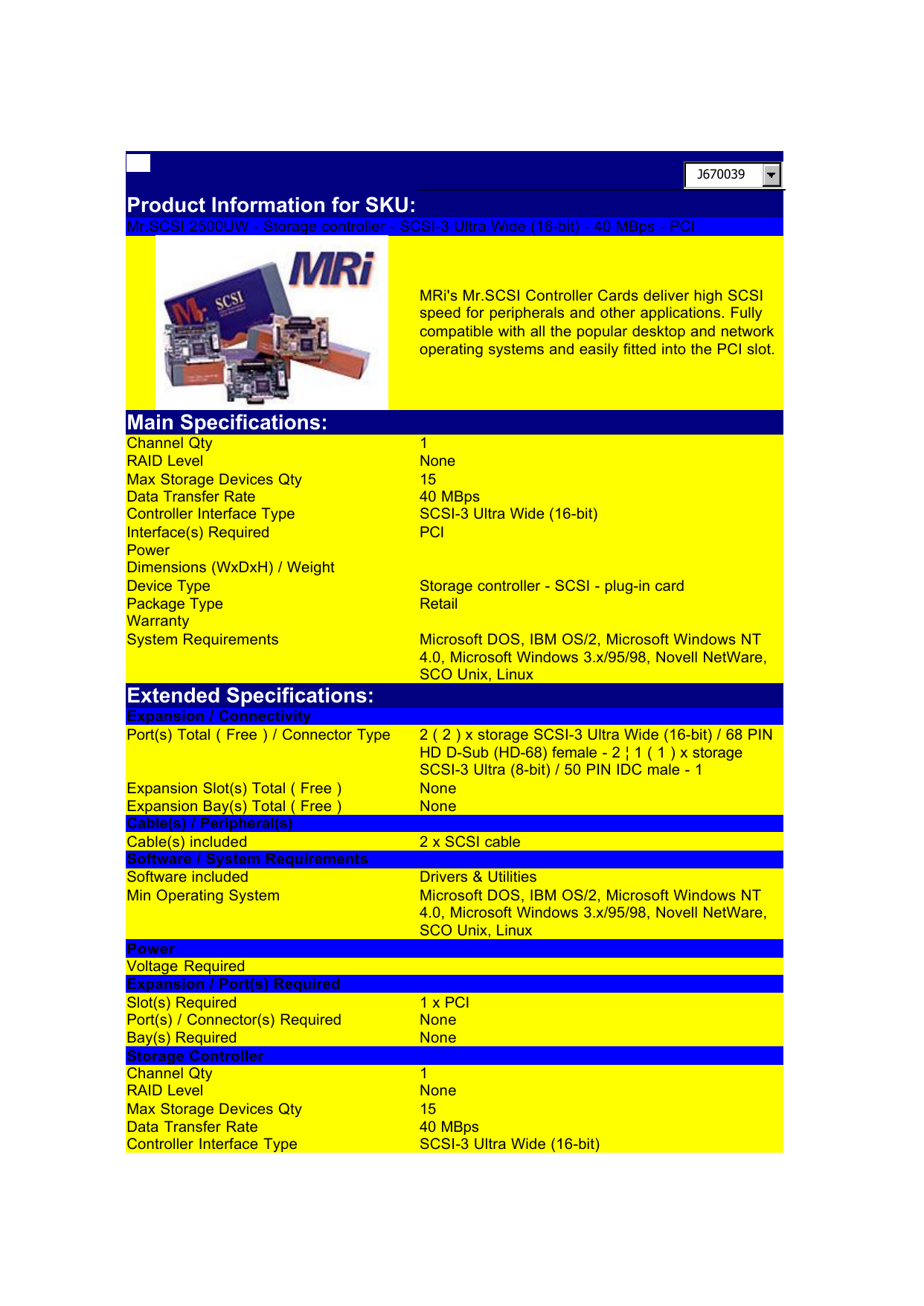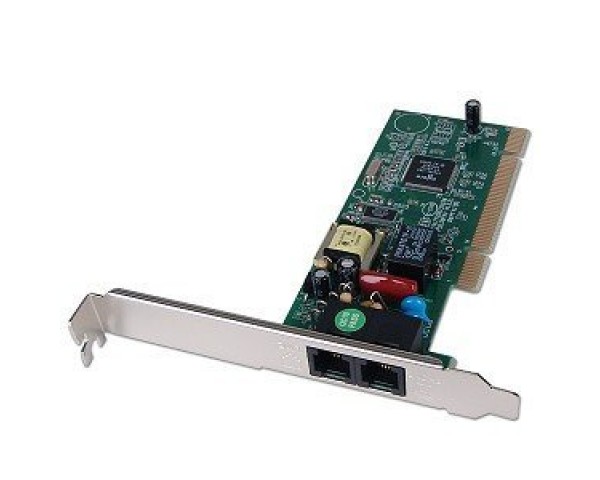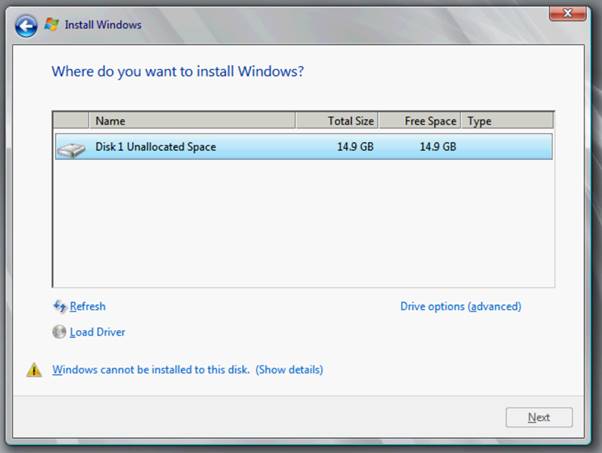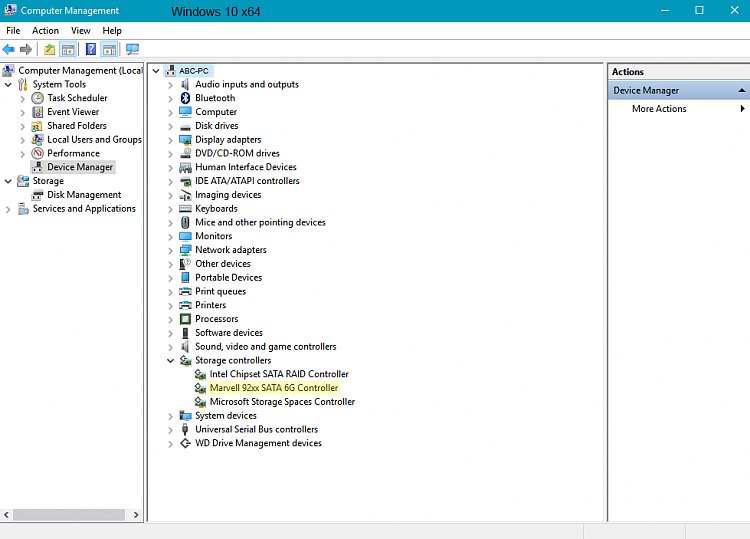- Microsoft Scsi & Raid Devices Driver Win 7
- Microsoft Scsi & Raid Devices Driver Download
- Microsoft SCSI & RAID Devices Driver
- Microsoft Scsi & Raid Devices Driver Updater
- Microsoft Scsi & Raid Devices Drivers
Short for Small Computer System Interface, SCSI is pronounced as 'Scuzzy' and is an interface for disk drives that was first completed in 1982. Unlike competing standards, SCSI is capable of supporting eight devices, or sixteen devices with Wide SCSI. However, with the SCSI host adapter on ID number 07 and booting from the ID 00. This leaves the availability of six device connections. In the picture below, is an example of a SCSI adapter expansion card with an internal and external connection. Once installed in the computer, this adapter would allow multiple SCSI devices to be installed in the computer. More advanced motherboard may also have available SCSI connections on the motherboard.
Microsoft Scsi & Raid Devices Driver Win 7
SCSI-1 is the original SCSI standard developed back in 1986 as ANSI X3.131-1986. SCSI-1 is capable of transferring up to eight bits a second.
- Microsoft iSCSI Software Target 3.3 provides storage (disks) over a TCP/IP network. It turns a computer running Windows Server into a storage device which provides shared block storage.
- ISCSI storage: What it is, and why you should be using it During a recent visit to QNAP here in Taiwan, one thing that popped up in conversation was why home users would need iSCSI.
In versions of Windows prior to Windows 10, Version 2004 (OS build 19041.488 or higher), the device ID format for a small computer system interface (SCSI) device is as follows: SCSI t.v (8)p (16)r (4). Microsoft iSCSI Initiator: Microsoft's Internet Small Computer System Interface (iSCSI) support software for Microsoft Windows client and server environments.

SCSI-2 was approved in 1990, added new features such as Fast and Wide SCSI, and support for additional devices.
SCSI-3 was approved in 1996 as ANSI X3.270-1996.
SCSI is a standard for parallel interfaces that transfers information at a rate of eight bits per second and faster, which is faster than the average parallel interface. SCSI-2 and above supports up to seven peripheral devices, such as a hard drive, CD-ROM, and scanner. They can all attach to a single SCSI port on a system's bus. SCSI ports were designed for Apple Macintosh and Unix computers, but also can be used with PCs. Although SCSI was popular in the past, today it has largely been superseded by faster connection types, such as SATA.
Microsoft Scsi & Raid Devices Driver Download
SCSI connectors
Microsoft SCSI & RAID Devices Driver

The illustrations below are examples of commonly-used SCSI connectors on computers and devices.
Microsoft Scsi & Raid Devices Driver Updater
Related pages
Cable, Computer acronyms, Connection, Data cable, Fast Wide SCSI, Hard drive terms, Initiator, iSCSI, Phases, SAS, SCSI bus, SCSI cable, SCSI chain, SCSI device, SCSI-to-SCSI cable, Terminate, Ultra SCSI
Short for Small Computer System Interface, SCSI is pronounced as 'Scuzzy' and is an interface for disk drives that was first completed in 1982. Unlike competing standards, SCSI is capable of supporting eight devices, or sixteen devices with Wide SCSI. However, with the SCSI host adapter on ID number 07 and booting from the ID 00. This leaves the availability of six device connections. In the picture below, is an example of a SCSI adapter expansion card with an internal and external connection. Once installed in the computer, this adapter would allow multiple SCSI devices to be installed in the computer. More advanced motherboard may also have available SCSI connections on the motherboard.
SCSI-1 is the original SCSI standard developed back in 1986 as ANSI X3.131-1986. SCSI-1 is capable of transferring up to eight bits a second.
SCSI-2 was approved in 1990, added new features such as Fast and Wide SCSI, and support for additional devices.

Microsoft Scsi & Raid Devices Drivers
SCSI-3 was approved in 1996 as ANSI X3.270-1996.
SCSI is a standard for parallel interfaces that transfers information at a rate of eight bits per second and faster, which is faster than the average parallel interface. SCSI-2 and above supports up to seven peripheral devices, such as a hard drive, CD-ROM, and scanner. They can all attach to a single SCSI port on a system's bus. SCSI ports were designed for Apple Macintosh and Unix computers, but also can be used with PCs. Although SCSI was popular in the past, today it has largely been superseded by faster connection types, such as SATA.
SCSI connectors
The illustrations below are examples of commonly-used SCSI connectors on computers and devices.
Related pages

Cable, Computer acronyms, Connection, Data cable, Fast Wide SCSI, Hard drive terms, Initiator, iSCSI, Phases, SAS, SCSI bus, SCSI cable, SCSI chain, SCSI device, SCSI-to-SCSI cable, Terminate, Ultra SCSI
